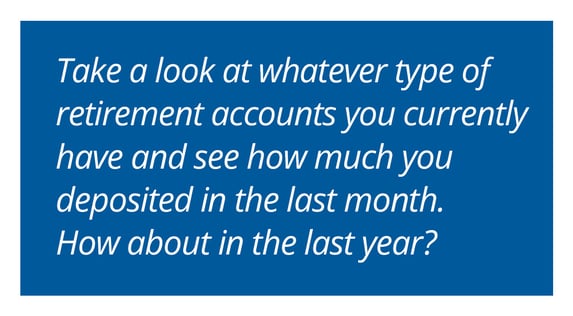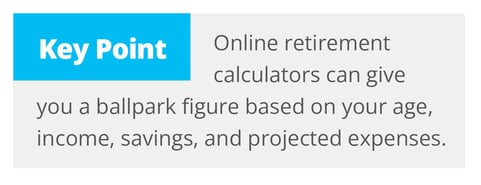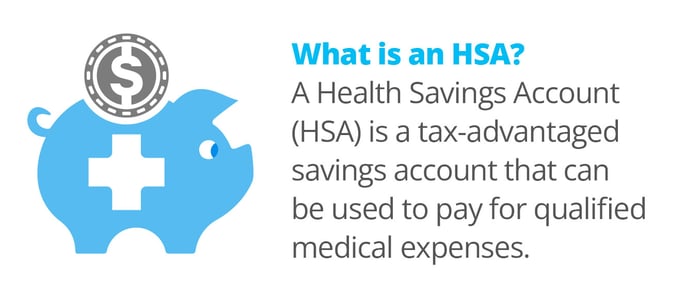Table of Contents
1. Step 1: Know Your Retirement Number
2. Step 2: Choose the Right Retirement Accounts
3. Step 3: Start Saving, Even If It’s Small
4. Step 4: Maximize Employer Benefits
5. Step 5: Eliminate High-Interest Debt
6. Step 6: Boost Your Financial Literacy
7. Step 7: Revisit and Adjust Annually
8. Step 8: Plan for Healthcare in Retirement
9. The Most Important Step: Partnering With a Trusted Financial Institution
At any age, retirement planning should be a priority. It is never too early, or too late, to start securing your financial future in your retirement. While retirement may seem far away, there are small steps you can take along the way to build strong savings habits and meet micro goals to motivate yourself long-term. We’ll guide you through 8 practical steps that anyone can follow, each with its own mini checklist, so you can see that your goals are reachable. After envisioning your retirement goals in Step 1, we encourage you to examine all of the steps and move through your financial plan based on your needs and priorities, as your journey is unique.
Step 1: Know Your Retirement Number
The first step involves a little bit of imagination and some calculation. Imagine your ideal retirement: Are you traveling the world, volunteering, moving closer to family, running a small business, or simply enjoying a slower pace of life? The clearer your vision, the more accurately you can estimate the financial resources you'll need to support it.
This is where your “retirement number” comes into play, the amount of money you'll need to cover your expenses throughout retirement. It's not just about replacing your paycheck; it’s about funding the lifestyle you want, covering essentials like housing and food, and preparing for long-term needs such as rising healthcare costs.
Online retirement calculators can give you a ballpark figure based on your age, income, savings, and projected expenses. But don’t forget to adjust for inflation, which can significantly impact your purchasing power over time.
Step 1 Checklist
- Use a retirement calculator to estimate your future needs and living expenses.
- Consider your ideal retirement lifestyle (travel, homeownership, part-time work).
- Factor in inflation and healthcare costs.
Step 2: Choose the Right Retirement Accounts
Not all retirement accounts are created equal. Choosing the right one depends on your income level, tax situation, and future goals. The most common options are 401(k)s, Traditional IRAs, and Roth IRAs, each with its own set of tax advantages.
A Traditional IRA allows you to contribute pre-tax income, reducing your taxable income now. A Roth IRA, on the other hand, uses after-tax dollars, but your withdrawals in retirement are tax-free. Younger earners often benefit from Roth accounts because they’re likely in a lower tax bracket now than they will be in retirement.
It’s okay to start small. The key is to get started, understand your options, and adjust as your income and goals evolve. If you're unsure which type is right for you, a financial advisor or credit union specialist can help you weigh the pros and cons.
Step 2 Checklist
- Open a retirement account that suits your current financial situation.
- Learn the differences between Roth and Traditional IRAs (and 401(k)s if applicable).
Step 3: Start Saving, Even If It’s Small
Even taking small steps will get you closer to a destination, so the same can be said for your retirement. Making small money moves can not only motivate you to reach for more but also make an impact on your long-term retirement savings. Take a look at whatever type of retirement accounts you currently have and see how much you deposited in the last month. How about in the last year?
Making automatic deposits can keep you consistent, especially with a monthly goal in mind. Starting at $25-$100 is a great starting point, and as time goes on, you could increase this number when your income increases.
Step 3 Checklist
- Open or check your existing retirement accounts (401(k), IRA).
- Set a realistic monthly contribution goal (even $25–$100 is a great start).
- Enable auto-transfers to build the habit.
Step 4: Maximize Employer Benefits
If your employer offers a retirement plan like a 401(k), you’re already one step ahead, especially if they match your contributions. An employer match is essentially free money that goes directly toward your retirement savings. Not taking full advantage of it is like leaving part of your paycheck on the table.
Every company has its own match policy; for example, they might match 50% of your contributions up to 6% of your salary. To make the most of this benefit, contribute at least enough to get the full match. If you're unsure about your company's policy, reach out to your HR or benefits department for details.
Keep in mind, contributing more than the match (if you can afford it) is even better. These pre-tax contributions lower your taxable income today while building your retirement tomorrow.
Step 4 Checklist
- Find out if your employer offers a 401(k) or similar retirement plan with matching.
- Contribute at least enough to receive the full employer match.
- Meet with HR or review your benefits guide to understand your retirement plan options.
Step 5: Eliminate High-Interest Debt
Debt can sabotage your long-term savings goals. Before you can make the most of your retirement savings, it’s important to get high-interest debt under control, especially from credit cards and personal loans. These debts can drain your budget and limit your ability to invest in your future.
While not all debt is harmful (like a mortgage or low-interest student loans), high-interest debt often grows faster than retirement investments, meaning you could be losing more in interest payments than you're gaining in savings returns. That’s why it’s smart to prioritize paying off those balances as soon as possible.
Start by organizing your debts from highest to lowest interest rates. Then, build a payoff strategy, whether it’s the avalanche method (tackling highest-interest debts first) or the snowball method (paying off the smallest debts first for momentum). If you’re feeling overwhelmed, speak with a financial advisor about debt consolidation or restructuring options that can help you take control.
Step 5 Checklist
- List out all your debts with interest rates.
- Focus on paying off credit cards or personal loans first.
- Consider a debt consolidation plan if necessary.
Step 6: Boost Your Financial Literacy
The more you know, the better you plan. Apart from official sources like government agencies and financial literacy-based companies, Addition Financial also offers a wide variety of resources for you to plug into everything financial. We have our Making It Count podcast, a blog, interactive resource guides, and a team ready to share their expertise with you whenever you need it.
Step 6 Checklist
- Read one article or attend one free webinar per month on retirement topics.
- Follow reputable financial blogs or podcasts.
- Schedule a consultation with a financial advisor or credit union representative.
Step 7: Revisit and Adjust Annually
Retirement planning isn’t a “set it and forget it” task; it’s an ongoing process. As your income, expenses, and goals change over time, your retirement plan should change with them. Regular check-ins help ensure you're staying on track and taking advantage of new opportunities.
Make it a habit to review your retirement accounts at least once a year. Look at your contribution amounts, investment performance, and asset allocation. Have you received a raise? Changed jobs? Paid off a major debt? These milestones are great opportunities to increase your retirement contributions or update your savings strategy.
Also, don’t forget to review and update account details like your beneficiaries, contact information, and investment preferences. Life changes such as marriage, divorce, or the birth of a child should always trigger a review of your financial plan.
Step 7 Checklist
- Review your retirement accounts each year (contributions, performance, etc.).
- Adjust contributions based on raises, bonuses, or lifestyle changes.
- Update beneficiaries and account info as needed.
Step 8: Plan for Healthcare in Retirement
Medical costs are one of the biggest retirement expenses. It’s easy to focus only on savings and investments when planning for retirement, but healthcare is one of the largest and most often underestimated expenses in later life. From routine doctor visits to prescriptions and long-term care, medical needs can quickly add up.
If you're still working and have access to a high-deductible health plan (HDHP), consider opening a Health Savings Account (HSA). HSAs offer triple tax advantages: your contributions are tax-deductible, your investments grow tax-free, and withdrawals for qualified medical expenses are also tax-free, making them a powerful tool for retirement planning.

Additionally, it’s wise to familiarize yourself with Medicare options, supplemental insurance plans, and the potential need for long-term care insurance, which can help cover nursing home or home care services that aren’t included in traditional plans.
Step 8 Checklist
- Research Health Savings Accounts (HSAs) if you have a high-deductible health plan.
- Learn about Medicare and long-term care insurance.
- Include healthcare costs in your retirement budget planning.
The Most Important Step: Partnering With a Trusted Financial Institution
You don’t have to plan alone. Partnering with the team at Addition Financial Credit Union is a great step at any time. Retirement planning is a marathon, not a sprint, so every step counts and requires strategy and careful preparation. You don’t have to start by trying to complete every step today; just start with one and see if you can check off the micro goals on that step’s checklist. Your motivation and determination to reach your retirement goals should be celebrated, and we are excited to partner with you to help you feel confident in your plan. Are you looking for help with other savings goals or financial planning? Check out our Emergency Savings Plan Builder; it's a free resource to map out your savings for unexpected expenses. Here at Addition Financial, we want the best for your money, whether it is having a backup plan or charging forward to your financial future.
/AFCU_93-EmergencySavingsPlan-CTA.jpg?width=1143&height=262&name=AFCU_93-EmergencySavingsPlan-CTA.jpg)





/AFCU_93-EmergencySavingsPlan-CTA.jpg?width=1143&height=262&name=AFCU_93-EmergencySavingsPlan-CTA.jpg)